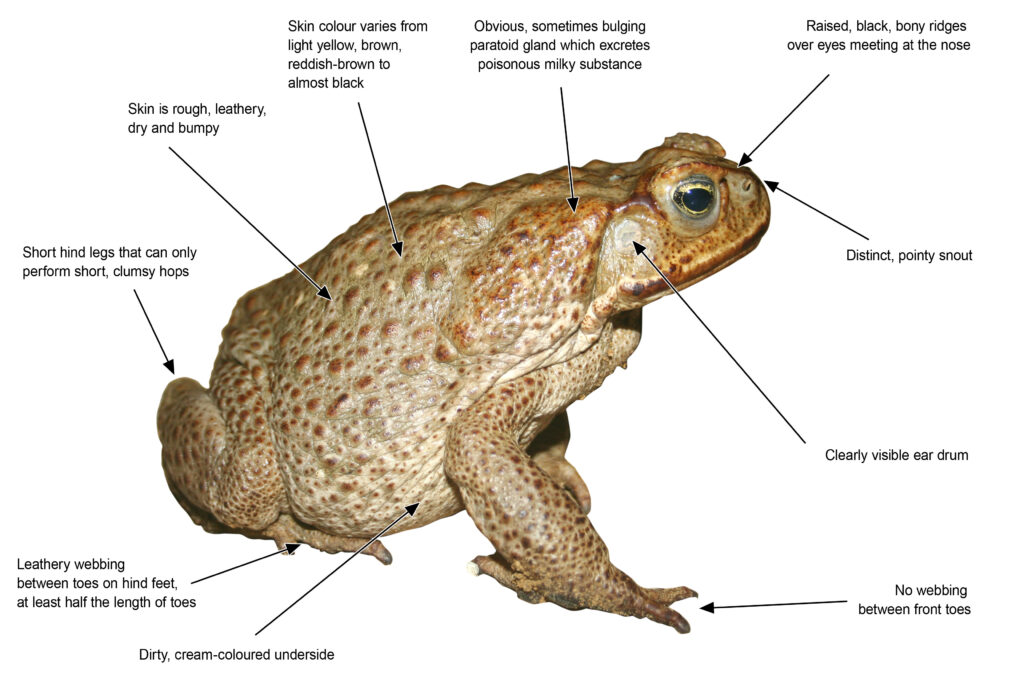Cane Toads and Dogs
When dog owners first move to Queensland, they have a lot of questions about cane toads and if they can negatively affect their dogs. Are cane toads poisonous to dogs? How to identify cane toads? Are dead cane toads still poisonous? What are the signs of cane toad poisoning?
In this article, we’ll cover these questions and more, as well as how to prevent your dog from coming into contact with cane toads.
1. How to identify cane toads

*1The colour of cane toads can vary from grey, yellowish, olive-brown or a reddish-brown, with their stomach being pale with a dark mottling.
They are large, heavily-built amphibians with dry, warty or bumpy skin who sit upright. However, male cane toads are smaller and have wartier skin than their female counterparts.
They have a bony head with bony ridges over their eyes which meet above their snout. Their back feet have leathery webbing between the toes, while their front feet are unwebbed.
On each shoulder behind their eardrums, cane toads have large swellings, these are their parotoid glands where their poison is stored. They cannot jump as high, fast or as far as native frogs can jump.
2. Are cane toads poisonous to dogs?
YES. The ingestion of cane toad toxin can be fatal, or at least cause serious symptoms, such as:
- Profuse salivation, drooling and/or frothing from the mouth
- Very red and slimy gums
- Pawing at the mouth
- Vomiting
- Disorientation, shivers and/or tremors
- Muscle rigidity, spasms or seizures
- Very rapid heart rate and/or heart beat irregularities
- Death
3. Are dead toads stills poisonous?
At every stage of the life cycle; they are poisonous. From the eggs and tadpoles, to the adult cane toads and even dried dead cane toads. All are poisonous and consumption can be fatal. After a cane toad is completely decomposed, however, they are considered safe.
4. What are the signs of cane toad poisoning
*2 Signs of cane toad poisoning can be as follows, and if not treated quickly can be fatal.
- Drooling or foaming at the mouth
- Red and slimy gums
- Pawing at mouth
- Vomiting
- Disorientation
- Dilated pupils
- Increased heart rate
- Panting or difficulty breathing
- Wobbly gait or loss of coordination
- Muscle twitches and tremors
- Part of body (legs) or whole body going rigid
- Seizures
- High body temperature
- Death
If you suspect your dog has eaten or in some form, consumed the toxin of a cane toad, call your vet and maintain close supervision of your dog. Using a damp cloth, wipe the inside of their mouth until the slimy coating has been removed – usually this takes 10 to 20 minutes
NEVER use a hose to flush the toxin from their mouth – as this can make them to inhale the water causing life-threatening pneumonia
Take them to the vet immediately
5. How to prevent your dog from coming into contact with cane toads?
Need help training your dog to leave cane toads alone?
Contact us to learn more about how we can help you prevent your dog from coming into contact with toads this wet season.